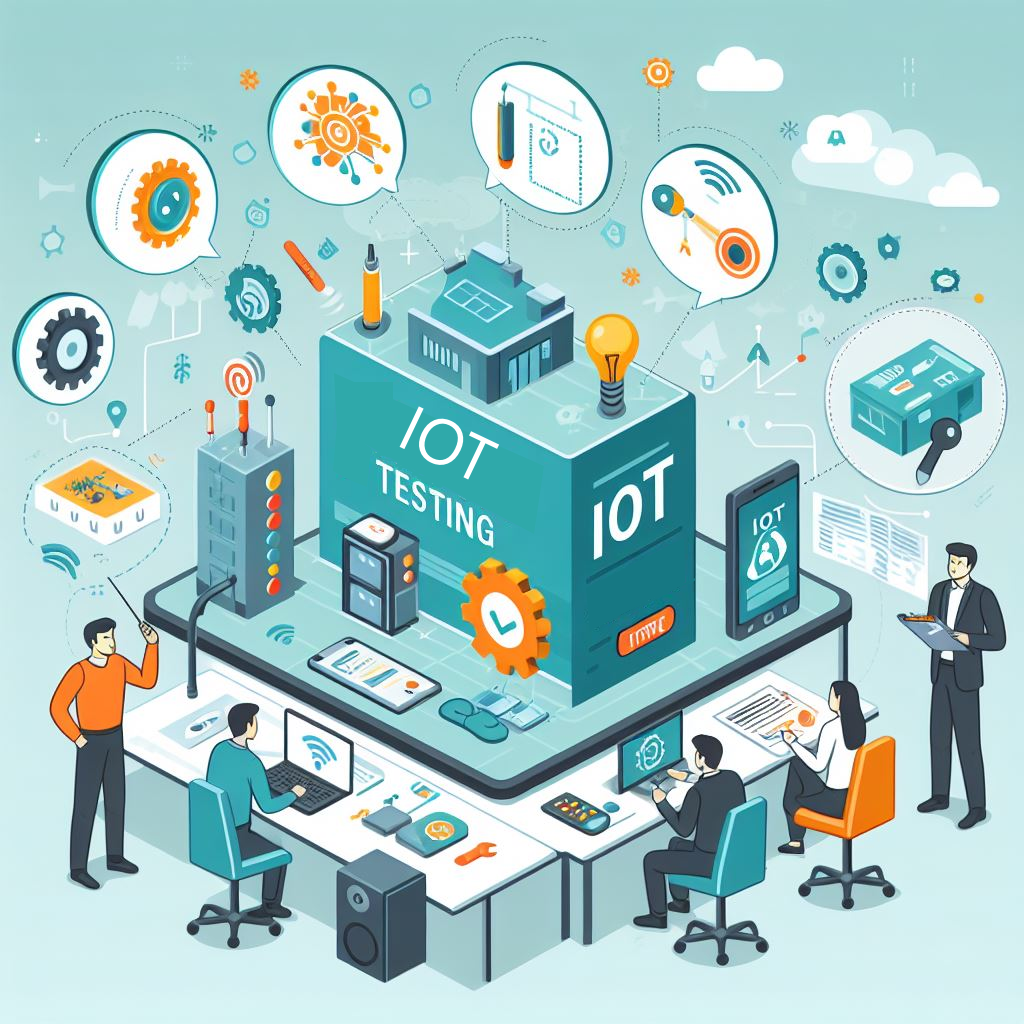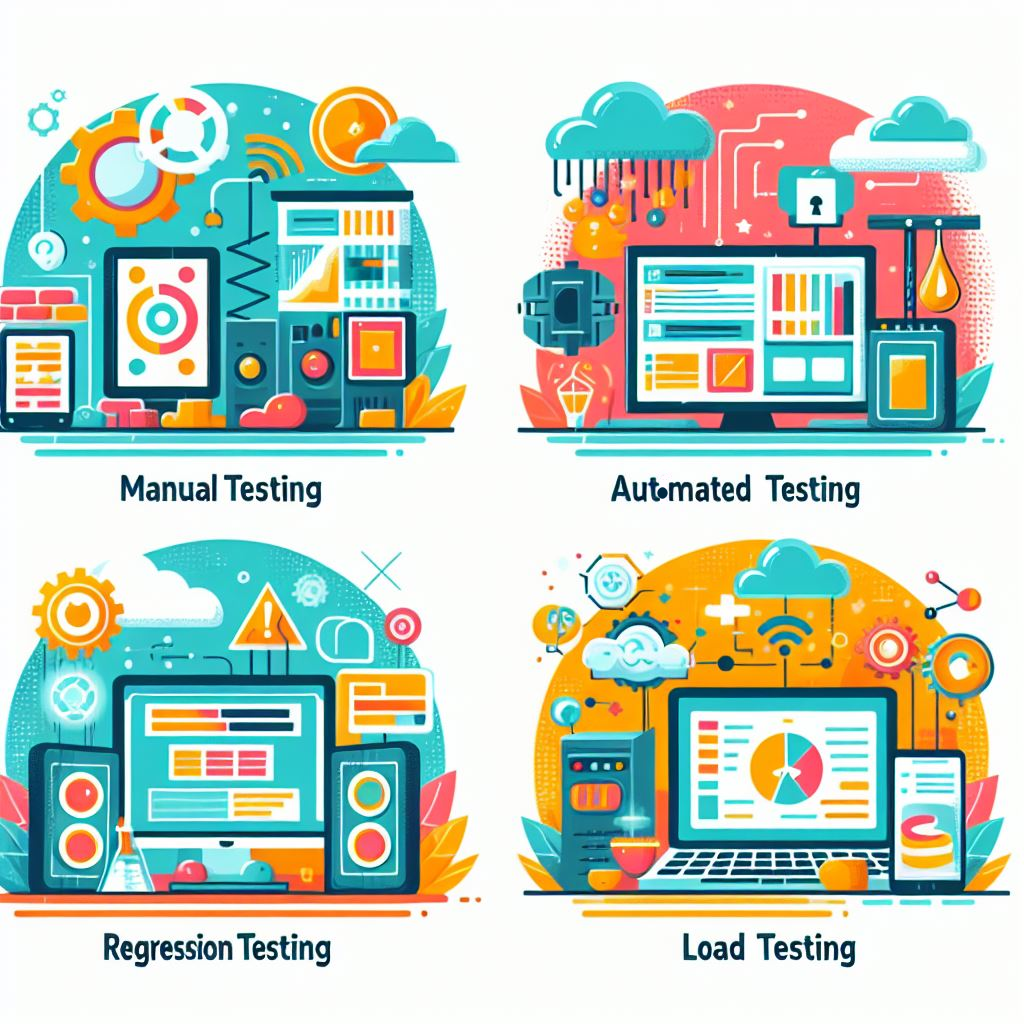From Hardware to Security - A Holistic Approach to Testing IoT Devices
From Hardware to Security: A Holistic Approach to Testing IoT Devices
Introduction
The Internet of Things (IoT) has taken the world by storm, transforming our daily lives with a myriad of connected devices and applications. As IoT adoption continues to grow, it becomes crucial to ensure the seamless functioning, security, and reliability of these devices. This is where IoT testing comes into play. In this article, we will discuss IoT testing, challenges, techniques, and best practices that can help organizations build robust IoT ecosystems.
What is IoT Testing?

IoT testing is a process of testing Internet of Things (IoT) devices and systems to ensure they meet their requirements and work as expected. IoT devices are connected to the internet and can collect, store, and transmit data. They are used in several applications, such as smart homes, industrial automation, and healthcare.
Testing IoT Devices
Testing IoT devices involves verifying the functionality, performance, and security of the devices. IoT devices are composed of hardware, software, and communication components. Testing these components requires different tools and techniques. Here are some ways developers test IoT devices:

- Hardware Testing: Hardware testing involves checking the physical components of the IoT device. This includes verifying the accuracy of sensors, actuators, and communication interfaces. Hardware testing can be performed using tools such as oscilloscopes, multimeters, and logic analyzers.
- Software Testing: Software testing involves verifying the functionality and performance of the software running on the IoT device. This includes testing the user interface, data processing, and communication protocols. Software testing can be performed using tools such as unit testing frameworks, simulation tools, and debugging tools.
- Network Testing: Network testing involves verifying the communication between IoT devices and other devices in the network. This includes testing the reliability, latency, and bandwidth of the communication channels. Network testing can be performed using tools such as network analyzers, protocol analyzers, and network simulators.
- Security Testing: Security testing involves verifying the security features of the IoT device. This includes testing the authentication, encryption, and access control mechanisms. Security testing can be performed using tools such as vulnerability scanners, penetration testing tools, and security analysis tools.
Different Strategies for Testing IoT Devices

Testing IoT devices requires a comprehensive and systematic approach. Here are some strategies that can be implemented in testing IoT devices:
- Manual Testing: Manual testing involves performing tests on the IoT device manually. This includes testing the user interface, functionality, and performance of the device. Manual testing is suitable for small-scale IoT devices and can be time-consuming and error-prone.
- Automated Testing: Automated testing involves using tools and scripts to perform tests on the IoT device. This includes unit testing, integration testing, and end-to-end testing. Automated testing is suitable for large-scale IoT devices and can be more efficient and reliable than manual testing.
- Regression Testing: Regression testing involves retesting the IoT device after making changes or updates to the device. This includes verifying the functionality, performance, and security of the device. Regression testing is crucial to ensure that the device remains functional and secure after updates.
- Load Testing: Load testing involves testing the performance of the IoT device under heavy loads. This includes testing the device's ability to handle high volumes of data and requests. Load testing is crucial for ensuring that the device remains functional and responsive under heavy usage.
It is important to use a combination of these strategies to ensure that your IoT devices are thoroughly tested. By doing so, you can help to prevent problems and ensure that your IoT devices are reliable and secure.
Challenges in IoT Testing
IoT testing is a complex process, considering the vast variety of devices, platforms, and protocols in use. Some key challenges faced by testers in the IoT domain include:
- Diversity: IoT devices come in different shapes, sizes, and capabilities, making it challenging to create a comprehensive test suite that covers all possible combinations.
- Connectivity: Ensuring seamless connectivity and interoperability between devices and platforms can be an arduous task. Testers must ensure that devices can connect, interact, and share data without any glitches.
- Scalability: With millions of connected devices, IoT systems need to be highly scalable. This requires rigorous testing to ensure that the system can handle the increasing number of devices and their interactions without compromising performance.
- Security: IoT devices are often vulnerable to security threats, necessitating rigorous testing to identify and address potential vulnerabilities and protect sensitive data.
Additional Challenges in IoT Testing
In addition to the challenges mentioned above, IoT testing also faces a number of other challenges, such as:
- Time constraints: IoT projects often have tight deadlines, which can make it difficult to conduct thorough testing.
- Cost: IoT testing can be expensive, due to the need for specialized equipment and expertise.
- Complexity: IoT systems are often complex and difficult to understand, which can make it difficult to identify and test all potential problems.
Despite these challenges, IoT testing is essential to ensure the quality and security of IoT systems. By carefully planning and executing an effective testing strategy, testers can help to ensure that IoT systems are reliable, secure, and meet the needs of their users.
IoT Testing Techniques
The Internet of Things (IoT) is a rapidly growing field, with billions of devices now connected to the internet. This growth has led to a corresponding increase of IoT devices, which are often complex and difficult to test.
There are several strategies that can be used to test IoT devices. One common approach is to use a cloud-based testing platform. These platforms provide many features that can help developers test their devices, such as the ability to simulate different network conditions, and to generate large volumes of data.
Another approach to testing IoT devices is to use a physical test lab. This approach can be more expensive than using a cloud-based testing platform, but it can also be more accurate. Physical test labs typically have many devices and equipment that can be used to test IoT devices, such as power supplies, oscilloscopes, and signal generators.
No matter which approach is used, it is important to test IoT devices thoroughly before they are deployed in the real world. By doing so, developers can help ensure that their devices are reliable, secure, and meet the needs of their users.
Testing Techniques in IoT Testing
- Functional testing: This involves testing the features and functionalities of IoT devices to ensure they work as intended. Functional testing includes validating data accuracy, device synchronization, and device connectivity.
- Performance testing: Performance testing is crucial to ensure that IoT devices and systems can handle the load and stress of real-world use. This includes testing the device's response time, throughput, latency, and scalability.
- Security testing: Security testing aims to identify vulnerabilities and security risks in IoT devices and systems. It includes penetration testing, encryption validation, and authentication testing.
- Compatibility testing: Compatibility testing evaluates how well IoT devices work with different platforms, operating systems, and other devices. This ensures seamless interoperability and smooth communication across the IoT ecosystem.
- Usability testing: Usability testing focuses on the user experience, ensuring that IoT devices and applications are easy to use, navigate, and understand.
- Environmental testing: This type of testing ensures the device can operate in several environmental conditions, such as extreme temperatures, humidity, and radiation.
- End-to-end testing: This type of testing ensures that the entire system, from the device to the cloud, works as expected.
- Compliance testing: This type of testing ensures that the device complies with all applicable regulations, such as those governing privacy and security.
By using a variety of testing techniques, testers can help to ensure that IoT systems are reliable, secure, and meet the needs of their users.
Best Practices for IoT Testing
To effectively test IoT devices and systems, organizations must adopt several best practices, including:
- Adopting a Test-Driven Development (TDD) approach: TDD emphasizes writing test cases before developing the application code, helping testers identify and address potential issues in the early stage.
- Leveraging automation: Automating repetitive and time-consuming test cases can significantly improve testing efficiency and accuracy. Automated testing tools can help identify issues more quickly, allowing teams to focus on addressing them.
- Embracing Continuous Integration and Continuous Deployment (CI/CD): CI/CD enables organizations to integrate testing into the development process, allowing faster identification and resolution of issues.
- Implementing a robust test environment: A well-designed test environment that simulates real-world conditions is crucial for accurate and effective IoT testing. This may include emulating various devices, networks, and communication protocols.
- Prioritizing security: Given the sensitive nature of IoT data, security should be a top priority throughout the testing process. Regular security audits, vulnerability assessments, and adherence to security best practices can help minimize potential risks.
- Use a variety of testing techniques: As mentioned earlier, there are a number of different testing techniques that can be used in IoT testing. By using a variety of techniques, testers can get a more comprehensive view of the system and identify potential problems that might not be caught with just one type of testing.
- Involve stakeholders: IoT systems are often complex and have a wide range of stakeholders. By involving stakeholders in the testing process, organizations can get valuable feedback and ensure that the system meets the needs of all users.
- Continuously monitor and improve: IoT systems are constantly evolving, so it is important to continuously monitor and improve the testing process. This includes identifying new potential problems, evaluating the effectiveness of current testing techniques, and implementing new testing tools and technologies as needed.
By following these best practices, organizations can help to ensure that their IoT systems are reliable, secure, and meet the needs of their users.
Conclusion
IoT testing is a complex but crucial aspect of ensuring the reliability, performance, and security of connected devices and systems. Testing IoT devices is a complex and challenging process that requires a comprehensive and systematic approach. Developers use various tools and techniques to test the hardware, software, communication, and security components of IoT devices. Different strategies, such as manual testing, automated testing, regression testing, and load testing, are implemented in testing IoT devices. By implementing these strategies, developers can ensure that IoT devices are functional, reliable, and secure.